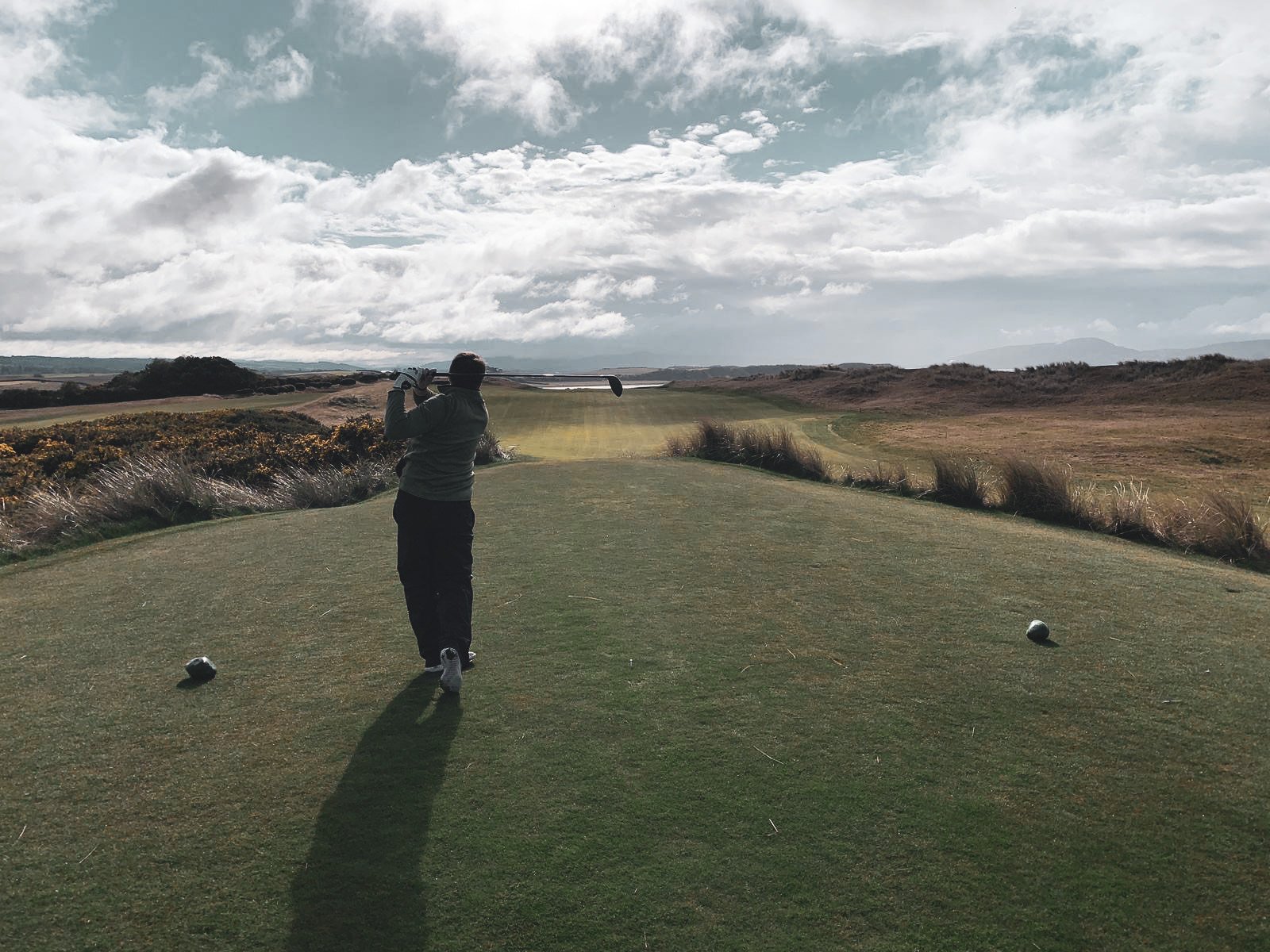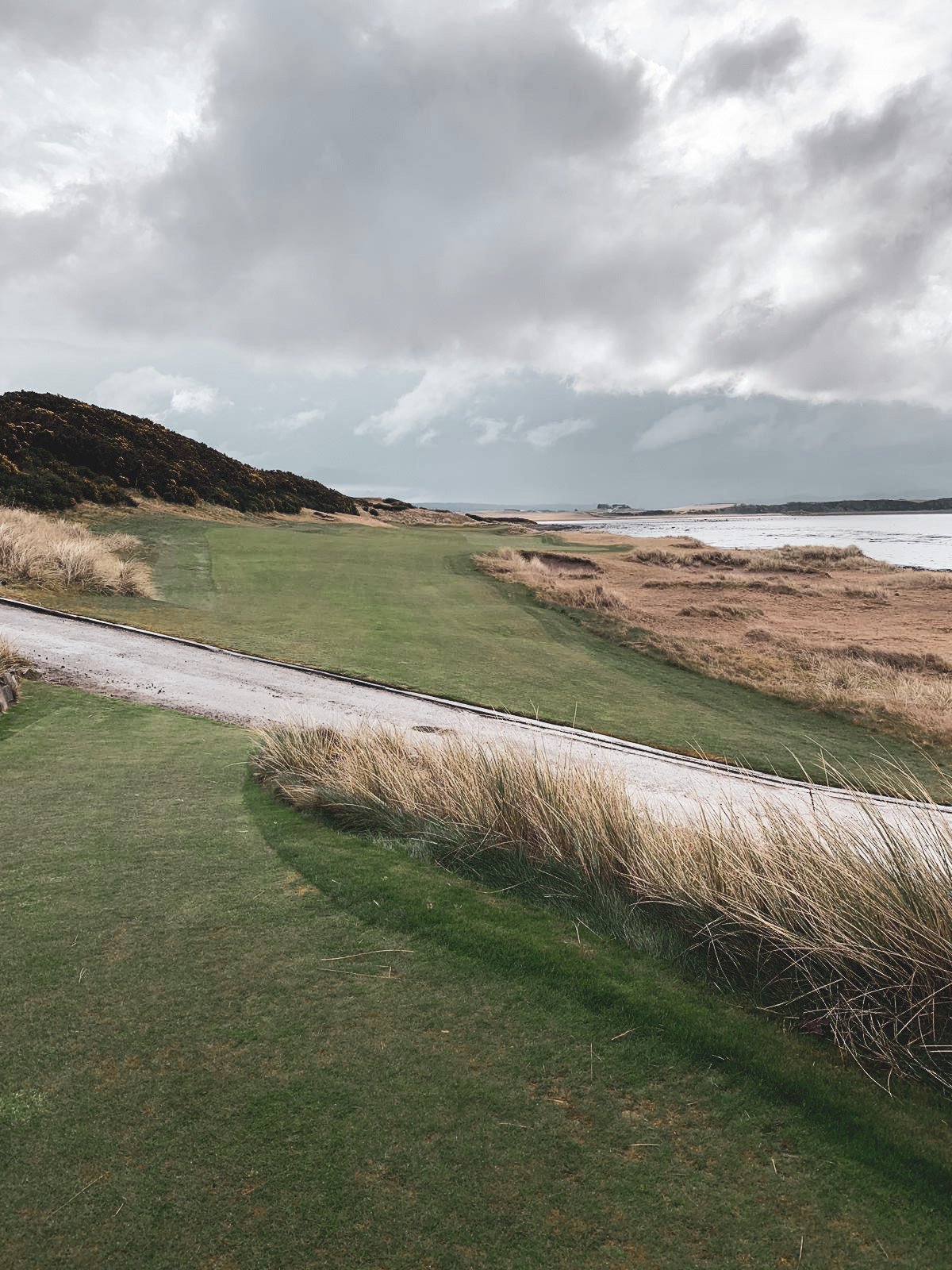Castle Stuart Golf Links
The golf course sits on the Moray Firth, no more than 7 miles East of Inverness, and occupies the land once owned by the Earl of Moray who resided in the castle from which the course takes it name. The course was created by Mark Parsinen, a man who built a reputation for creating notable golf courses after successfully completing Kingsbarns in Fife with the architect Kyle Phillips. He collaborated with another American in Gil Hanse for Castle Stuart to create the championship course which was completed in 2009.
The course has held 4 Scottish Opens with Phil Mickelson, Alex Noren and Luke Donald being amongst the winners. It became the first links course used for the Scottish Open - a move intended to entice the big name players - after the tournament was held at parkland Loch Lomond in previous years. This was due to the players wanting to play traditional links the week before the British Open.
Our trip to Castle Stuart was the first stop on what would be 3 days in the highlands of Scotland playing some wonderful golf. Castle Stuart stood alone in many ways - more of a resort - the clubhouse is a wonderful art deco outpost sitting high on the cliffs overlooking the Moray Firth. The hospitality was second to none and the staff were extremely flexible, accommodating for the Scottish weather. Again, not a traditional Scottish golf club by any means.
Moving onto the course itself, traditional links it is not. Although the name would suggest otherwise, it isn’t bound by sand filled dunes or riddled with revetted pot bunkers. It has some design nuances which hark to old links courses such as the long fescue around the natural bunkering and some amazing holes which hug the rugged coastline. But it wasn’t designed to be a an outright links and I think most people would agree.
The outward nine - which heads west - would normally play into the prevailing wind. The first holes down by the sea give a great horizon of the Kessock Bridge towards Inverness. The first thing to note is how generous the course is from the tee box. Not intimidating either, there isn’t much danger posed unless you are really having an off day. A gentle introduction you might think. It took a few holes to understand that placement from the tee was critical however, much like the Old Course at St Andrews, where tighter lines down fairways provide simpler approach shots. The greens are narrow from back to front and missing them either side isn’t preferable. At all. Three of the front nine run along the coast, with a mouthwatering backdrop before the first of the par 3’s - the 4th - which heads back inland and beautifully frames the Castle in the background with its decorative dome like roof. The remaining holes on the front nine continue in the same vain but run along the high side of the course. After you pass the clubhouse and go East then comes what might be the standout stretch of holes. Number 10 has an elevated tee which points towards the Moray Firth. Your second shot is into a green perched on the threshold between land and sea which leads you onto hole 11. The most photographed hole on the course is a short par 3, where again you hit out towards the ocean. An infinity green awaits where anything that’s long may end up in the drink. Surrounded by natural bunkering hazards which lie in all forms. It’s visually stunning and a true test of golf. One more hole continues along the coast before heading inland and back towards the clubhouse. The meat of the second nine provides plenty of opportunities for scoring, designed with the prevailing wind in mind, it may appear slightly less challenging than the front 9. Another challenging par 3 is 17, back into wind, before a lengthy par 5 to finish and opportunity to close on a birdie.
Overall, it’s a very enjoyable and memorable golf course to visit and it’s well worthy of its championship status. Its design style is very subtle but it provides a stern challenge especially when the wind blows. The views are stunning and the superb hospitality make it a must visit.


